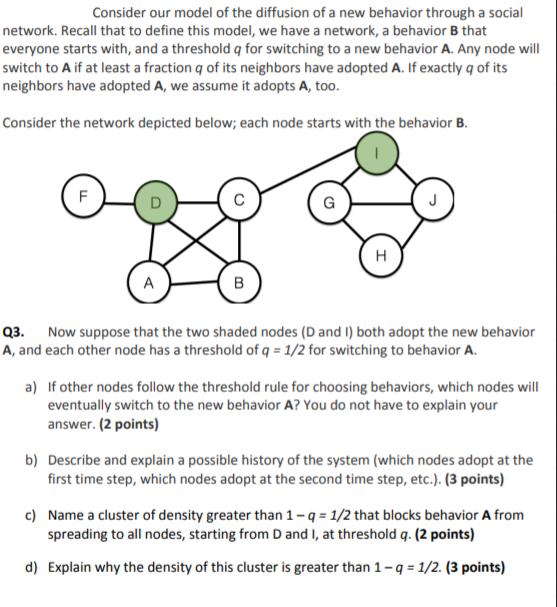Answered step by step
Verified Expert Solution
Question
1 Approved Answer
Consider our model of the diffusion of a new behavior through a social network. Recall that to define this model, we have a network,

Consider our model of the diffusion of a new behavior through a social network. Recall that to define this model, we have a network, a behavior B that everyone starts with, and a threshold q for switching to a new behavior A. Any node will switch to A if at least a fraction q of its neighbors have adopted A. If exactly q of its neighbors have adopted A, we assume it adopts A, too. Consider the network depicted below; each node starts with the behavior B. F D A B H Q3. Now suppose that the two shaded nodes (D and I) both adopt the new behavior A, and each other node has a threshold of q = 1/2 for switching to behavior A. a) If other nodes follow the threshold rule for choosing behaviors, which nodes will eventually switch to the new behavior A? You do not have to explain your answer. (2 points) b) Describe and explain a possible history of the system (which nodes adopt at the first time step, which nodes adopt at the second time step, etc.). (3 points) c) Name a cluster of density greater than 1-q=1/2 that blocks behavior A from spreading to all nodes, starting from D and I, at threshold q. (2 points) d) Explain why the density of this cluster is greater than 1-q = 1/2. (3 points)
Step by Step Solution
There are 3 Steps involved in it
Step: 1

Get Instant Access to Expert-Tailored Solutions
See step-by-step solutions with expert insights and AI powered tools for academic success
Step: 2

Step: 3

Ace Your Homework with AI
Get the answers you need in no time with our AI-driven, step-by-step assistance
Get Started


